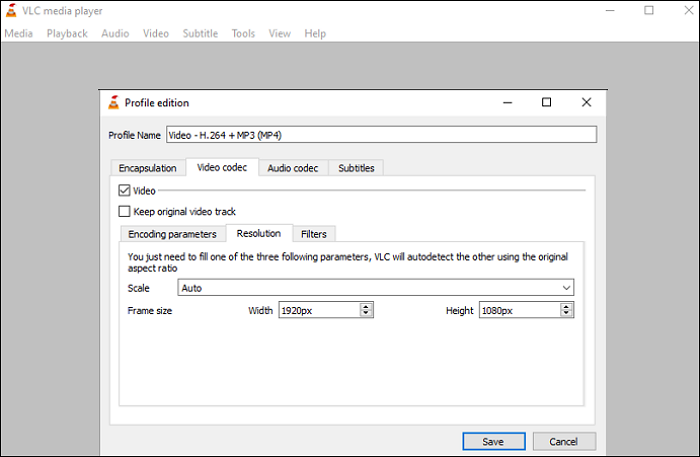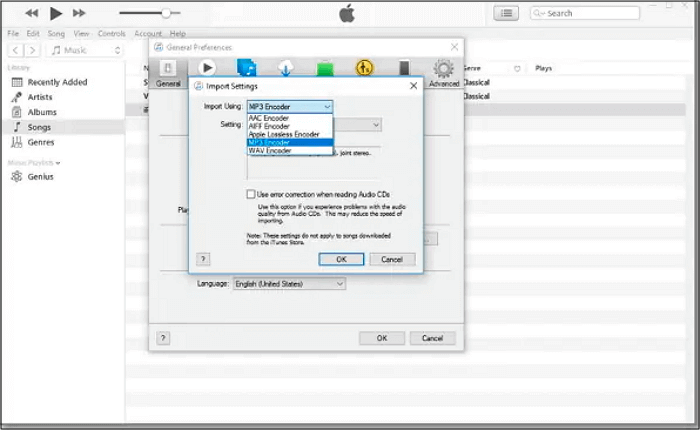-
Jane is an experienced editor for EaseUS focused on tech blog writing. Familiar with all kinds of video editing and screen recording software on the market, she specializes in composing posts about recording and editing videos. All the topics she chooses are aimed at providing more instructive information to users.…Read full bio
-
![]()
Melissa Lee
Melissa is a sophisticated editor for EaseUS in tech blog writing. She is proficient in writing articles related to screen recording, voice changing, and PDF file editing. She also wrote blogs about data recovery, disk partitioning, and data backup, etc.…Read full bio -
Jean has been working as a professional website editor for quite a long time. Her articles focus on topics of computer backup, data security tips, data recovery, and disk partitioning. Also, she writes many guides and tutorials on PC hardware & software troubleshooting. She keeps two lovely parrots and likes making vlogs of pets. With experience in video recording and video editing, she starts writing blogs on multimedia topics now.…Read full bio
-
![]()
Gloria
Gloria joined EaseUS in 2022. As a smartphone lover, she stays on top of Android unlocking skills and iOS troubleshooting tips. In addition, she also devotes herself to data recovery and transfer issues.…Read full bio -
![]()
Jerry
"Hi readers, I hope you can read my articles with happiness and enjoy your multimedia world!"…Read full bio -
Larissa has rich experience in writing technical articles and is now a professional editor at EaseUS. She is good at writing articles about multimedia, data recovery, disk cloning, disk partitioning, data backup, and other related knowledge. Her detailed and ultimate guides help users find effective solutions to their problems. She is fond of traveling, reading, and riding in her spare time.…Read full bio
-
![]()
Rel
Rel has always maintained a strong curiosity about the computer field and is committed to the research of the most efficient and practical computer problem solutions.…Read full bio -
![]()
Dawn Tang
Dawn Tang is a seasoned professional with a year-long record of crafting informative Backup & Recovery articles. Currently, she's channeling her expertise into the world of video editing software, embodying adaptability and a passion for mastering new digital domains.…Read full bio -
![]()
Sasha
Sasha is a girl who enjoys researching various electronic products and is dedicated to helping readers solve a wide range of technology-related issues. On EaseUS, she excels at providing readers with concise solutions in audio and video editing.…Read full bio
Page Table of Contents
0 Views |
0 min read
Everyone watches videos either by downloading or streaming but not everyone is aware of the fact that videos have formats. A lot of the videos we come across daily are MP4 videos. MP4 which can also be referred to as MPEG4 is a very common format that enables storing video and audio in small file sizes. In addition to storing audio and video, it can also store images, subtitles, or even 3D graphics. It can be used on many platforms which makes it easy to use and share with others.
Why Do You Need to Compress an MP4 Video file
Although videos in MP4 format are relatively smaller, some of them are quite large. Therefore it is necessary to further compress them to make these videos easier to manage. There are several benefits to compressing MP4 videos, some of which are:
- It reduces the amount of storage space these videos would consume
- It ensures the video stays within the limit allowed for sharing over emails
- Smaller videos are easy to upload and download
- It is easier to backup
How to Compress MP4 on Windows 10
There are several ways to compress MP4 on Windows 10 easily. Although some methods which you might have come across may seem practical, there is a risk of compromising the quality of your video. Here are some ways to compress MP4 files on Windows 10 without losing quality.
1. Free Video Compressor for Windows 10 - VLC Media Player
VLC media player is a multi-purpose tool when it comes to audio and video. Its most common use is to play audio and video, however, VLC can be used for other things such as downloading, streaming, conversion, and of course compression.
Step 1. Download and Install VLC
VLC media player is not a built-in application on Windows 10, therefore you need to download it first to be able to use it. Visit the official VLC page and be sure to download the version that is compatible with your OS. Once the download is complete, proceed to install the app on your PC
Step 2. Launch VLC to begin compression
Click on the application icon to open the software, after loading, you can now begin to compress. Select "Media" and proceed to click on "Convert" from the available options. The next thing to do is to click "Add" to import your MP4 video then click "Convert" one more time
Step 3. Select desired output format and finish
You will be required to set the kind of output you want so that VLC can compress the video according to those parameters. Click "Browse" to select a destination for the compressed video and finally click "Start" to begin the process of compressing your video. Wait till it's done before closing the window.
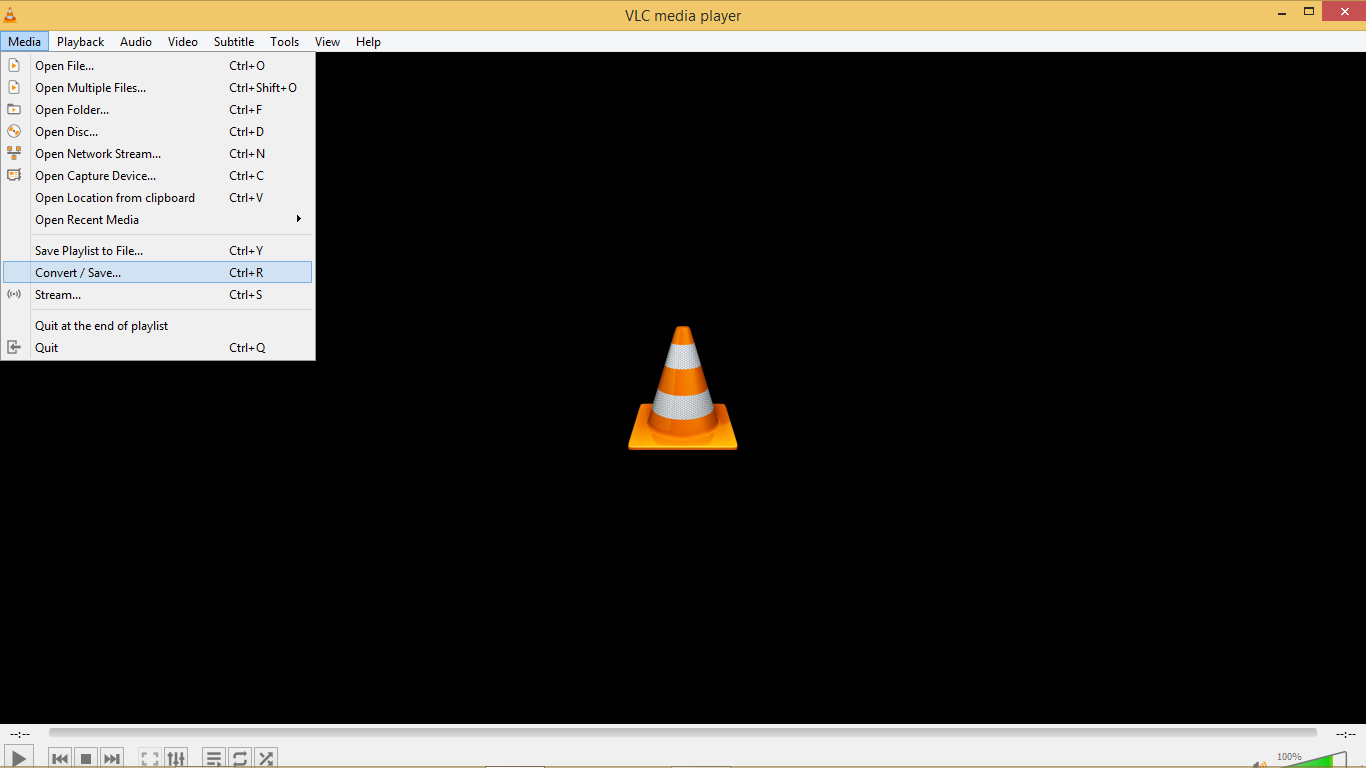
2. Built-in MP4 Compressor for PC - Windows Media Player
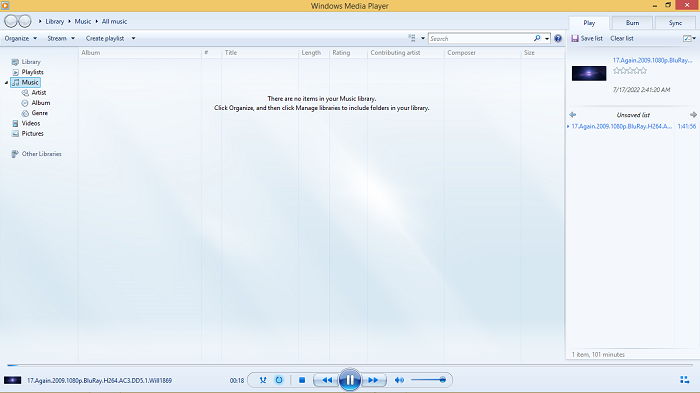
Windows media player is a built-in software on Windows 10, this means that you do not need to download or install the app as that has already been done for you. It is a multimedia tool that is often used to play audio and watch videos. It also supports simple video editing and sharing. MP4 files on Windows media player are already compressed and the application itself does not have any advanced compression tool.
3. Online MP4 Compressor for Windows - Media.io
Media.io is a free online tool for compression. This means that all you need to use this compression tool is an internet connection. It is fast, and simple to use and it also allows you to compress multiple MP4 files at a go. Media.io helps you make your MP4 small while giving you stellar quality.
Step 1. Visit the Media.io page online to upload your video
Ensure your PC has a steady internet connection and visit the Media.io website. Once the page has loaded you can proceed to upload your large MP4 video file
Step 2. Set compression parameters
Choose your desired compression mode, set the size, quality, resolution, etc that you want, and proceed to compress the video
Step 3. Download your compressed video
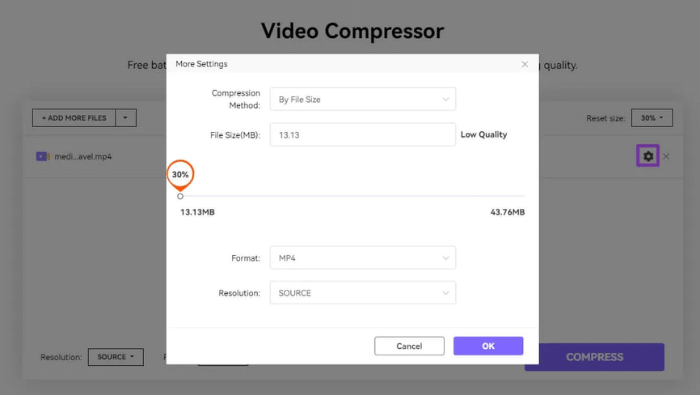
Once the compression process is over, you can hit the download button to save the compressed file to your device. You also have the option to save it to your drive if you wish
4. Fast Video Compressor for Windows 10 - Freemake Video Converter
This software is your go-to tool if you're looking for a fast compressor that doesn't depend on your internet plan. It is free, easy to use, and can compress videos in bulk.
Step 1. Download and install Freemake Video Converter
Freemake Video Converter is neither a pre-installed app nor is it an online service, therefore head to the website to download the software and install it on your PC
Step 2. Launch the app and add the video you want to compress
Run the app on your system and import the video or videos you are about to compress. You can do this by dragging and dropping them onto the freeware or clicking the "+ Videos" blue button
Step 3. Select your preferred compression parameters
The next step is to configure your compression data i.e set the size, resolution, etc you want for the output
Step 4. Convert the video
Click on "convert" to create a smaller version of the video you imported to the software.
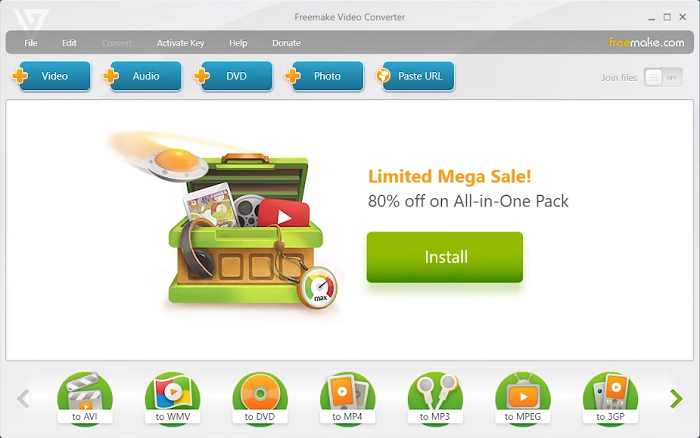
FAQs
1. How do I reduce the size of an MP4 file in Windows 10?
To reduce the size of an MP4 file in Windows 10, you need to compress the file since compressing a file makes it smaller. You can use any of the methods listed above to compress MP4 files thus reducing the size of the file
2. How do I compress a video on Windows 10 for free?
VLC media player and Media.io are tools for compression on Windows 10, you can choose to download an application that'll help you compress your video or do the compression online. Either way, it is absolutely free and quite easy once you follow the steps given in the article
3. How do I make an MP4 smaller without losing quality?
A video with poor quality often discourages viewers so it is understandable to want to preserve quality while compressing an MP4 video. A tip on how to compress MP4 without affecting quality drastically is to ensure the video is not highly compressed i.e the size of your compressed video should not be too far from the original size, you are also advised not to scale the video as that degrades quality.
The Conclusion
While it is known that videos in MP4 format are usually less large than in other formats, many of them still need to be compressed. You might face a few challenges while compressing such as the resolution and the quality of a video, you should however keep in mind the kind of output you desire so that you do not sacrifice quality for small file size and vice versa.

